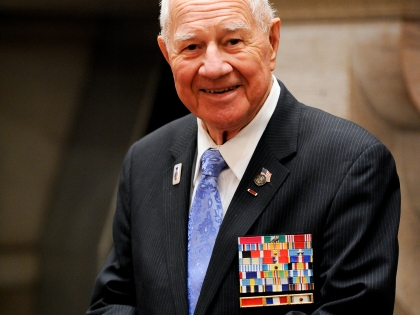
Larkin Publishes Annual Report On Racing, Gaming, & Wagering
William J. Larkin Jr.
April 6, 2005
Senator Bill Larkin (R-C, Cornwall-on-Hudson) today announced the release of the New York State Senate Standing Committee’s 2004 Annual Report on Racing, Gaming, and Wagering.
"This past year, racing and gaming issues were very much in the forefront of discussions centered on state revenue and the economy," said Senator Larkin. "This annual report on the Senate Committee’s work over the past twelve months covers a wide range of current racing and gaming issues, analysis of current research, the role of government, community and industry, and strategic directions for the future of the racing and gaming industries in New York State."
The report explores the following topics: casinos, horse racing, simulcasting and off-track betting, video lottery terminals, games of chance, the State Division of the Lottery, the impact on charitable organizations from bell jar and bingo games, compulsive gambling, the NYS Racing and Wagering Board, the Saratoga Institute on Racing and Wagering Law, and enacted legislation in New York State.
"Gaming in New York not only offers a venue for entertainment, but it provides a major funding source for public education and helps support local municipalities and many not-for-profit organizations," said Senator Larkin. "It is also important to note that approximately 33,000 New Yorkers are employed in the horse racing industry alone. This industry is a vital part of the New York economy."
For example, the study found that the horse racing industry has been experiencing a significant decrease in handle and purses over the past few years. In order to protect its future and thousands of jobs, "The industry needs to immediately refocus its marketing strategies to attract patrons," said Senator Larkin. "To remain profitable and continue contributing to the state’s economy, we should be developing ways to help revitalize the horse racing and equine industry in New York State."
Senator Larkin welcomes comments from residents and other interested parties on the information and conclusions in the study.
Share this Article or Press Release
Newsroom
Go to Newsroom
